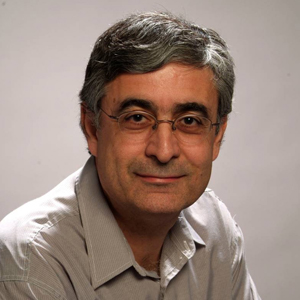Could a necktie have made
the difference?
Many years ago, I interviewed for a chair position at a major cancer center in New York City. My credentials were spot-on, I was at the right stage in my career, and I was very keen on moving to the Big Apple. When asked why I wanted to move, my response was cryptic: “I want to play for the New York Yankees.”
Negotiations transpired, and I quickly became one of two final candidates. I was convinced that I was the right person for the job, and I was even rumored to be the front-runner.

In total, I had three interviews on top of presenting at a formal research seminar. The last interview, which was the final stage of the hiring process, was attended by the entire selection committee and included the institute’s president and Nobel laureate, the chief of medicine, and a dozen others with similar titles and positions. For this interview, I was asked to give a presentation followed by a discussion.
While preparing for this final step, I considered two options: (a) to present my natural self, which would include my signature flamboyant and humorous style, or (b) to be the serious, phlegmatic and calculated candidate who would tell the committee exactly what it wanted to hear.
To help me decide, I asked my immediate advisers which of the two approaches to use. My then-25-year-old daughter, a Ph.D. graduate student, advised me to go with the first option, i.e., skip the tie (I hate those) and give a funny but informative talk covering all the areas I would be ranked on (such as my vision for the department). My wife, a Ph.D. scientist, suggested the exact opposite — wear a tie, present top content and don’t tell any jokes.
After weighing my options, I decided to listen to my daughter and give a tieless, sportily attired and information-loaded but amusing presentation. I was certain the committee would appreciate my confidence in taking a risky approach, especially under such stressful circumstances. I secretly hoped they would equate my tactic with that of a Yankee player pitching at a winning 3-2 game against the Boston Red Sox in the bottom of the ninth inning, with the bases loaded, two out and at full count. After all, it takes guts to throw a strike, but it could win you the World Series.
As part of my presentation, I created two cartoon characters (referred to here as Peter and Paul) representing the institute’s president and chief of medicine. In the cartoon, Peter and Paul chatted about me and asked questions about the needs of the institute, my credentials, expectations for the job and the like — one asking while the other answered based on information in my CV. At the end, I summed up with a video clip: Music from Star Wars played while a bright star rose from the institute’s grounds and landed on top of the Empire State Building, representing the projected meteoric rise of the department under my leadership. Triumphant indeed.
To monitor how I was doing, I carefully evaluated the faces of the two real characters during my talk. When presented with the cartoons, instead of cracking a smile as I had imagined, the Nobel laureate bit his lip. When the star landed on top of the Empire State Building, the chief of medicine scratched his head. Worst of all, when the presentation was over, the Nobelist walked out of the room without asking a single question. And during the question period, the 12 chiefs were more silent than the 12 apostles during the Last Supper.
A few days later, I was notified that I was off their candidates list. I later learned, to my surprise, that the other candidate also was not hired. Instead, they appointed an internal interim chief who stayed on for years.
I will never know if a tie and a conservative presentation would have landed me the job, but a few remarks are relevant here. First, a tie will not get you a job, but the absence of it may be costly, depending on the audience and its expectations — so better to wear one than not.
Second, tasteful jokes are usually well-received at conferences and other presentations (as I know from many years of lecturing), but “sense of humor” is a relative term and varies greatly among people; in critical interviews, trying to be funny is a big risk. It may be safe to keep some carefully selected jokes for dinner with the committee members but never for the final round. After all, there may be few, or just one, big “final round” in your entire career.
And lastly, returning to the baseball metaphor — a heroic win with the last strikeout might go into the books, but a game lost to a grand slam can be costly.
What would I do if I could do it again?
I’d throw a curve ball.
Enjoy reading ASBMB Today?
Become a member to receive the print edition four times a year and the digital edition monthly.
Learn moreFeatured jobs
from the ASBMB career center
Get the latest from ASBMB Today
Enter your email address, and we’ll send you a weekly email with recent articles, interviews and more.
Latest in Opinions
Opinions highlights or most popular articles

Sketching, scribbling and scicomm
Graduate student Ari Paiz describes how her love of science and art blend to make her an effective science communicator.

Embrace your neurodivergence and flourish in college
This guide offers practical advice on setting yourself up for success — learn how to leverage campus resources, work with professors and embrace your strengths.

Survival tools for a neurodivergent brain in academia
Working in academia is hard, and being neurodivergent makes it harder. Here are a few tools that may help, from a Ph.D. student with ADHD.

Hidden strengths of an autistic scientist
Navigating the world of scientific research as an autistic scientist comes with unique challenges —microaggressions, communication hurdles and the constant pressure to conform to social norms, postbaccalaureate student Taylor Stolberg writes.

Black excellence in biotech: Shaping the future of an industry
This Black History Month, we highlight the impact of DEI initiatives, trailblazing scientists and industry leaders working to create a more inclusive and scientific community. Discover how you can be part of the movement.

Attend ASBMB’s career and education fair
Attending the ASBMB career and education fair is a great way to explore new opportunities, make valuable connections and gain insights into potential career paths.

